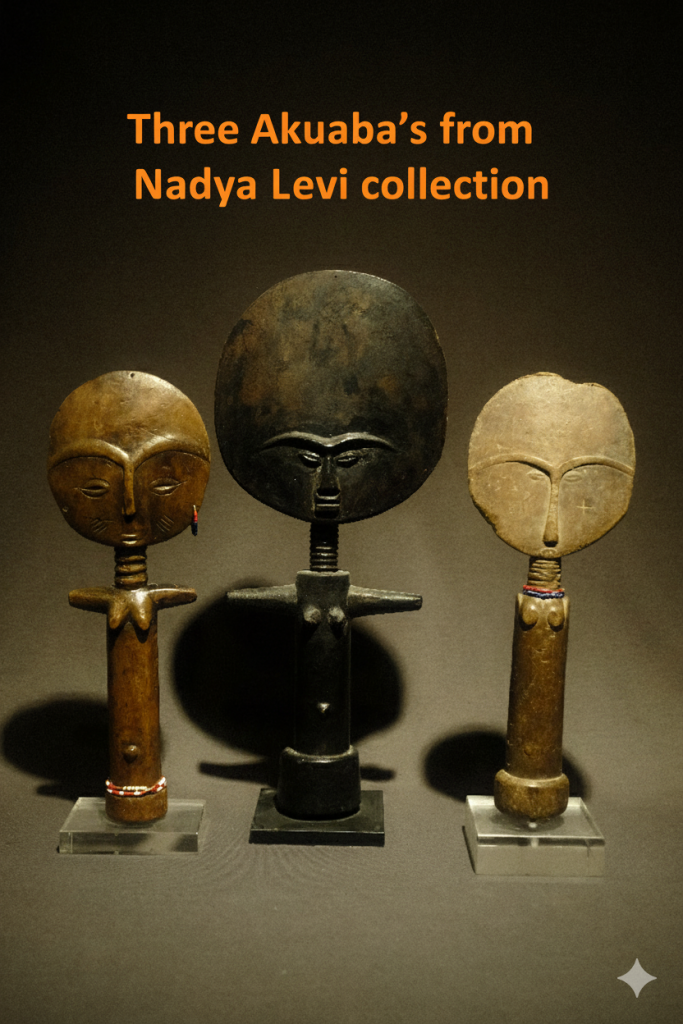These three Ashanti Akuaba fertility dolls all come from the respected collection of Nadya Levi. Each one speaks with a different voice — scale, patina, and condition combine to tell a layered story about ritual use, collecting, and family legacy.
The Legend of Akua
According to Akan tradition, a woman named Akua was unable to conceive. A priest advised her to have a small wooden figure carved and to care for it as she would a child: carrying it on her back, adorning it, and treating it with devotion. The townspeople mocked her, calling the figure “Akua’s child” (Akua’ba). Soon thereafter she conceived and gave birth to a healthy daughter. The practice spread: women adopted the ritual in hope of fertility, and the carved figures came to be known as Akuaba.
Form, Meaning & Use
- Head: The broad, flattened head both accentuates an Akan ideal of beauty and allows the doll to rest comfortably against a woman’s back.
- Neck rings: Carved rings suggest rolls of fat, a symbol of health and prosperity.
- Surface & patina: Handling and ritual use produce warm, tactile surfaces — a direct record of devotion.
- Fate after use: Many figures were returned to shrines as offerings; others became heirlooms and memorials within families.
The Nadya Levi Akuaba Trio

Available individually or together as a mini-collection.
37 cm — Monumental Akuaba
30 cm — Classic Akuaba
29 cm — Honey-patina Akuaba
Each doll may be purchased individually. For collectors who wish to acquire the full trio, we offer a special arrangement — please contact us to discuss options (private discount, combined shipping, or a surprise extra object included with your purchase).
Provenance & Notes
All three dolls originate from the collection of Nadya Levi. Photographs and condition reports are available on each product page. Serious collectors may request additional images or condition details by emailing david.norden@telenet.be.